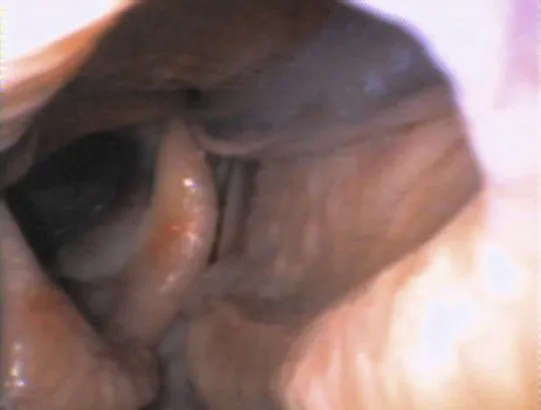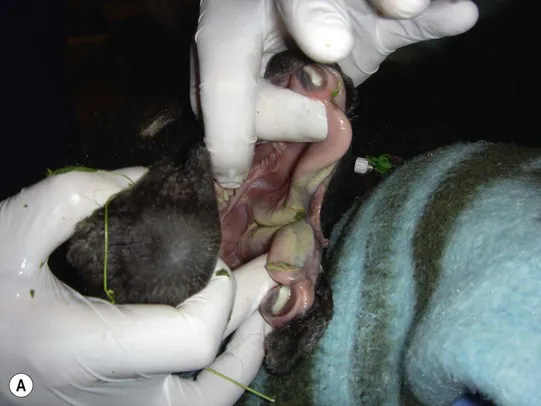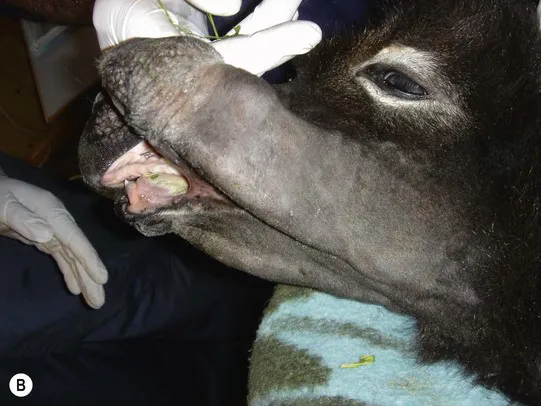
eBook - ePub
Knottenbelt and Pascoe's Color Atlas of Diseases and Disorders of the Horse
- 416 pages
- English
- ePUB (mobile friendly)
- Available on iOS & Android
eBook - ePub
Knottenbelt and Pascoe's Color Atlas of Diseases and Disorders of the Horse
About this book
A unique collection of photographic illustrations of the major equine disorders, providing both qualified practitioners and veterinary students with an invaluable guide to greater diagnostic accuracy, treatment options, and a wider understanding of the processes and signs of equine disorders. The systematic presentation of disorders along with the icon-based key points system of evaluation gives unparalleled ease of access and use. Conditions presented are gathered from around the world, making for a resource of universal application that is a major aid to the rapid visual recognition and interpretation of clinical signs that are vital elements of success in veterinary practice.
- Many new conditions added
- Over 300 new colour illustrations
- Brand new design with icon-based key points boxes.
- Systematic presentation of text with emphasis gives greater ease of access.
- Treatment options and prognoses now included.
- Includes access to online database of all disorders
- Two upcoming top experts brought in to build on the foundation of Derek Knottenbelt and Reg Pascoe's milestone text.
Frequently asked questions
Yes, you can cancel anytime from the Subscription tab in your account settings on the Perlego website. Your subscription will stay active until the end of your current billing period. Learn how to cancel your subscription.
No, books cannot be downloaded as external files, such as PDFs, for use outside of Perlego. However, you can download books within the Perlego app for offline reading on mobile or tablet. Learn more here.
Perlego offers two plans: Essential and Complete
- Essential is ideal for learners and professionals who enjoy exploring a wide range of subjects. Access the Essential Library with 800,000+ trusted titles and best-sellers across business, personal growth, and the humanities. Includes unlimited reading time and Standard Read Aloud voice.
- Complete: Perfect for advanced learners and researchers needing full, unrestricted access. Unlock 1.4M+ books across hundreds of subjects, including academic and specialized titles. The Complete Plan also includes advanced features like Premium Read Aloud and Research Assistant.
We are an online textbook subscription service, where you can get access to an entire online library for less than the price of a single book per month. With over 1 million books across 1000+ topics, we’ve got you covered! Learn more here.
Look out for the read-aloud symbol on your next book to see if you can listen to it. The read-aloud tool reads text aloud for you, highlighting the text as it is being read. You can pause it, speed it up and slow it down. Learn more here.
Yes! You can use the Perlego app on both iOS or Android devices to read anytime, anywhere — even offline. Perfect for commutes or when you’re on the go.
Please note we cannot support devices running on iOS 13 and Android 7 or earlier. Learn more about using the app.
Please note we cannot support devices running on iOS 13 and Android 7 or earlier. Learn more about using the app.
Yes, you can access Knottenbelt and Pascoe's Color Atlas of Diseases and Disorders of the Horse by Siobhan Brid McAuliffe in PDF and/or ePUB format, as well as other popular books in Medicina & Ciencias veterinarias equinas. We have over one million books available in our catalogue for you to explore.
Information
Chapter 1
Gastrointestinal system
Part 1: The mouth
Developmental disorders
Cleft palate (Figs. 1.1–1.3)
Cleft palate is an uncommon abnormality. When seen it most frequently involves the caudal aspect of the soft palate; however the hard palate, lips and external nares may also be affected. The degree to which it is heritable is not well defined. Foals with large clefts may show dramatic nasal regurgitation of milk during nursing. In some cases, particularly those with relatively small clefts or clefts in the soft palate, nasal return of milk becomes obvious only after feeding and may be relatively minor in amount. Small clefts may not always be easily visible or produce significant nasal return of food and, occasionally, some are only detected after some years, when nasal reflux of grass and more solid food material may be present. Consequent rhinitis and nasal discharges may not be immediately identifiable as resulting from a cleft palate. Occasionally the cleft is sufficiently small to produce no detectable evidence and these are sometimes identified incidentally during clinical or post-mortem examinations. Large palatal defects in young foals have profound effects including failure to ingest adequate amounts of colostrum, starvation and inhalation pneumonia.

Differential diagnosis: Nasal/oral discharge of milk and/or dysphagia may also be seen with:
• Neurologic dysphagia (associated with hypoxic ischemic encephalopathy in foals)
• Esophageal obstruction
• Laryngeal/pharyngeal abnormalities
• Severe weakness/depression.


Diagnosis
• In some cases, diagnosis can be made with a careful oral examination.
• Endoscopy should be performed via both nares. Oral endoscopy may also be required.
• Thoracic radiographs are useful to identify and characterize secondary pneumonia.
Treatment
• Treatment needs to be directed at two main areas, correction of the abnormality and treatment of secondary problems such as pneumonia.
• Treatment of the defect involves one of a variety of surgical techniques. Dehiscence of the surgical site is a common problem. In severely compromised foals, surgery may need to be delayed while secondary problems (pneumonia, sepsis) are addressed. In these situations, feeding via a nasogastric tube or parenteral nutrition is required.
• The prognosis is better in foals with defects only involving the soft palate.
Cleft tongue and mandible (Fig. 1.4A,B)
This condition has been seen in a number of donkey foals. The condition is thought to be heritable. The condition is visually obvious with no differentials. None of the cases to date have been treated as the defects are usually extensive and frequently these foals present with severe secondary complications related to the inability to nurse.


Parrot mouth (brachygnathia) (Figs. 1.5–1.7)
Parrot mouth is a common congenital abnormality characterized by disparity of the lengths of the mandible and maxilla. The mandible is shorter than the maxilla and there is no occlusal contact between the upper and lower incisors. Males are more commonly affected. In the milder cases, the full extent of the discrepancy may not be obvious at birth, becoming more apparent as the permanent incisors erupt and grow into their normal occlusal positions. The failure of significant occlusion results in an increasing overgrowth of the upper incisors and impingement of the mandibular teeth into the soft tissues of the hard palate. Individuals with lesser degrees of inferior brachygnathia may be less affected but the lingual edges of the lower incisors may become sharp and lacerate the gums and hard palate. More commonly the lower incisors tend to prolong the line of the lower jaw and the labial margins of the upper incisors become long and sharp and may lacerate the lower lip. Simultaneously there is usually a discrepan...
Table of contents
- Cover image
- Title page
- Table of Contents
- Dedication
- Copyright
- Foreword
- Preface
- Contributors
- Chapter 1: Gastrointestinal system
- Chapter 2: Conditions of the liver, spleen and pancreas
- Chapter 3: Conditions of the respiratory tract
- Chapter 4: Disorders of the cardiovascular system
- Chapter 5: Urinary tract disorders
- Chapter 6: Disorders of metabolism, nutrition and endocrine diseases
- Chapter 7: Skeletal disorders
- Chapter 8: Muscle
- Chapter 9: The integumentary system
- Chapter 10: Disorders of the eye
- Chapter 11: Disorders of the nervous system
- Chapter 12: Reproductive disorders
- Index